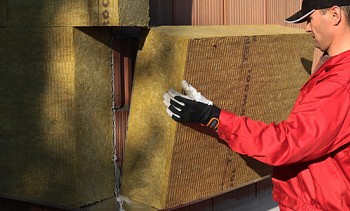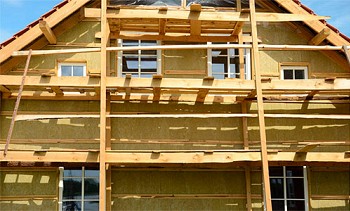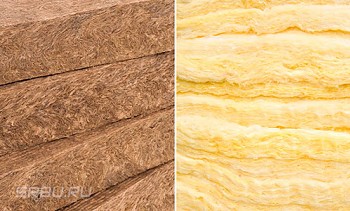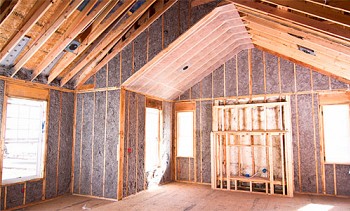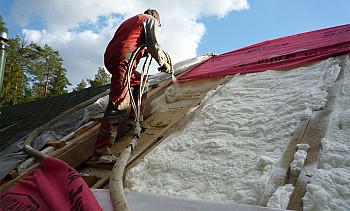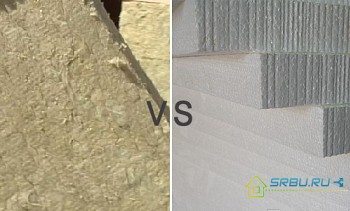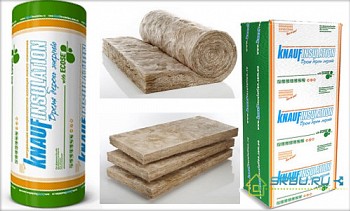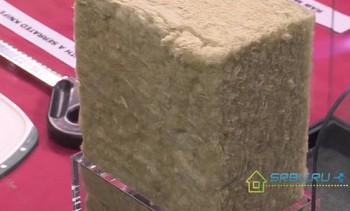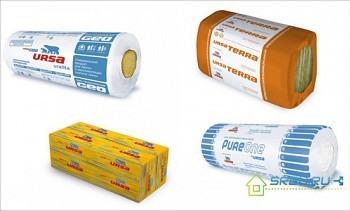Technical characteristics of mineral wool, its brands and selection criteria
In an effort to live in peace and comfort, the first thing we try to protect our home from the cold and extraneous noise. For many centuries, people have been looking for protection from the summer heat and winter cold. At first, fire from bonfires and fireplaces was used for heating; later, electric heaters joined them.
But if you use insulation based on mineral wool as insulation, you can escape from the frost and from the heat in the summer. Minvata technical characteristics which we will consider in this article have several varieties, each of which has its own advantages and disadvantages, so you need to carefully study them before buying. Next, we consider which of the materials can be considered mineral wool and their properties.
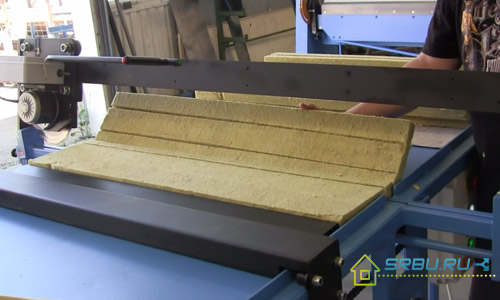
What types of mineral wool are produced today
According to GOST 52953-2008, three materials can be considered heat insulators belonging to the class of mineral wool: glass fiber, fiber produced from slag (slag), and stone wool. All these materials have different lengths and thicknesses of fibers and differ in parameters. In particular, they have various resistance to stress, thermal conductivity, moisture resistance and the ability to withstand heat.
Glass wool, commonly used for warming in Soviet times, is still quite cheap today. But she, unlike slag and stone wool, is very scratchy. Working with it requires precautionary measures. Now let's talk in detail about each type of mineral wool and list their characteristics.
Glass wool
This material consists of fibers with a thickness of 5 to 15 microns and a length of 15 to 50 millimeters. They make the glass wool elastic and extremely durable. It’s just that you need to work with it very carefully - after all, fragile glass threads, breaking, can dig into the skin, get into your eyes and injure them. If you accidentally inhale glass dust, you can damage the lungs. Therefore, when working with this insulation, you must always wear a disposable protective suit, glasses and a respirator. Do not forget to protect your hands - we put on gloves.
We list the characteristics of fiberglass minvata:
- The coefficient of thermal conductivity is from 0.03 to 0.052 watts per meter per Kelvin.
- Permissible heating temperature is up to 500 degrees Celsius. Optimal will be heating no higher than 450 degrees Celsius.
- Permissible cooling temperature is minus 60 degrees Celsius.
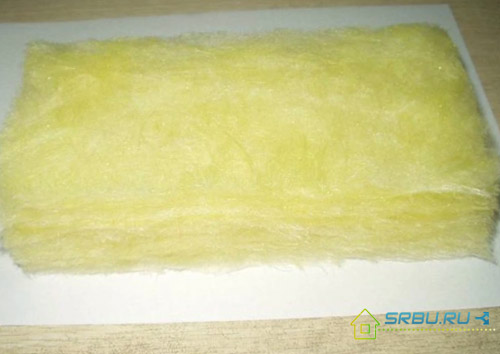
It looks like ordinary glass wool.
Slaggy
This material, produced from blast furnace slag, has a thickness of 4 to 12 microns and a length of 16 millimeters. Since slags have such a property as residual acidity, in a damp room they can aggressively affect metal surfaces. In addition, slag is too good in absorbing moisture, so it is unsuitable for thermal insulation of building facades. For the previous two reasons, it is also not suitable for warming water pipes, both metal and plastic. In addition, this material is fragile, so it pricks if you take it with your bare hands.
Characteristics of slag:
- The thermal conductivity coefficient (for dry matter) is from 0.46 to 0.48 watts per meter per Kelvin.
- The maximum allowable heating temperature is up to 300 degrees Celsius. When this value is exceeded, sintering of the fibers occurs, and the material ceases to be a heat insulator.
- Hygroscopicity is high.
Stone wool
In this variety, mineral wool is about the same size as that of slag. But they have a significant advantage - they do not prick. Therefore, working with stone wool is much safer than with glass or slag material. Its thermal conductivity is from 0.077 to 0.12 watts per meter per Kelvin, and it can be heated up to 600 degrees Celsius. By the way, if you mean mineral wool, then we are talking, as a rule, about stone wool.
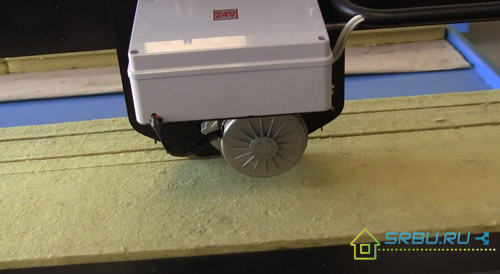
Cutting stone wool into slabs.
Of all its varieties, basalt wool has the best parameters. It is made, like a regular stone, from gabbro or diabase. But in the stone wool there are still blast furnace slags, a mixture and mineral components - clay, limestone and dolomite.
These impurities contribute to the increase in fluidity of the mass, they can be up to 35 percent of the total substance. A binder component based on formaldehyde resin contains less - from 2.5 to 10 percent. A decrease in the volume of this substance makes the material less moisture resistant, but the risk of phenol evaporation also decreases. As a result, the risk to human health is reduced.
Cotton wool from basalt differs in that it does not contain any additional components - neither mineral nor binders. Therefore, it can easily withstand heating up to 1000 degrees Celsius. And it can be cooled to minus 190 degrees Celsius, which will absolutely not harm this heat-insulating material. Basalt fiber is easily molded into rolls or sheet material, it is also convenient for them to stuff mats.
And also it is sold in loose form. Both ordinary stone and basalt wool do not burn - if they are heated above the permissible temperature, then the fibers of the material will only melt, sintering with each other.
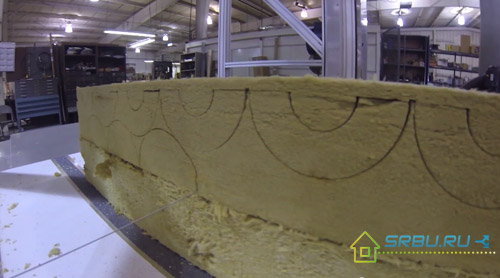
Slabs of stone wool.
About the brands of mineral wool and where each of them is used
Mineral wool is produced in the form of plates and mats. They insulate the roof, ceilings and floors, internal walls and partitions. You can work with both flat and non-standard surfaces. Difficulties when using this material usually do not arise. Since the density of mineral wool can be different, in accordance with this parameter several brands are distinguished. Further details about each of them.
Mineral wool brand P-75
The density of this material is 75 kilograms per cubic meter. It is well suited for the insulation of horizontal planes that are not subjected to heavy loads. In particular, these are attic rooms, as well as some types of roofing. Another piece of cotton wool of this brand is wrapped to save heat in pipes of heating plants, as well as gas and oil pipes. Manufacturers produce mineral wool and lower density, but it can only be used where there is no load at all.
Mineral wool brand P-125
Material with a density of 125 kilograms per cubic meter is suitable for warming the floor or ceiling, as well as partitions and walls indoors. In low houses made of brick, expanded clay concrete or aerated concrete, such cotton wool can become an inner layer of a wall consisting of three layers. The material of this brand also has good soundproofing properties. Using it, you can not only insulate the building, but also protect yourself from noise.
Minvata brand ПЖ-175
This material is not only dense, but also has increased rigidity. It is usually used for thermal insulation of ceilings and walls made of reinforced concrete or profiled sheet metal.
Minvata brand PPZh-200
This abbreviation means that a mineral wool slab has increased rigidity. Apply it in the same cases as the previous brand. The only difference is that the PPZh-200 brand can also be used as additional protection against fire.
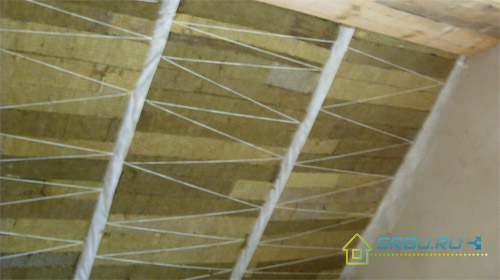
Attic insulated with pieces of stone wool.
What are the disadvantages of mineral wool?
Although the stone wool fibers do not prick, their tiny pieces can still rise into the air like dust. There is a danger of inhalation, which is not good for health.There is another danger - the formaldehyde resin that is part of this material can poison us with phenol, which is released from it. But these troubles can be completely avoided if safety precautions are followed.
First of all, do not forget to wear a respirator when working with mineral wool. And also cover the plane of the insulation over the entire surface with a vapor-proof polyvinyl chloride film. As for phenol, it will not stand out from minvata at room temperature. Naturally, if you purchase material from a good manufacturer.
True, when the material is heated to a temperature above the limit, phenol still gets out of control. What to do in this case? Try not to allow such a strong heating of the insulation. If this is not possible, then take a more expensive, but absolutely safe superthin basalt fiber. No phenol will stand out from it. Whatever you choose, try to buy products from a reliable large brand - in this case, the real technical characteristics of the mineral wool will strictly correspond to the declared ones.
A few tips for choosing mineral wool
We list the manufacturers that produce mineral wool of excellent quality. This, in particular, "URSA", "ISOVER", "PAROC", "Rockwool". Mineral wool from Germany is considered one of the best. If you met her in the store - buy safely. After all, no other EU country has such picky certification bodies. So it is not for nothing that they say that German quality speaks for itself.
The cost of mineral wool depends on its density. The higher this indicator, the more difficult it is to produce the material, and the more starting material is required in its production. This is obvious - because with increasing density, the number of fibers increases.
Although slag and glass wool are attractively priced, think carefully before purchasing them. These materials and as sound insulators are very mediocre, and they do not hold heat very well. But you won’t get any problems during installation - if glass wool gets on your skin, then the affected area will become inflamed and scratched for a long time.
Ask the seller in which direction the material fibers are located. If they go vertically, then mineral wool will be better to save heat and protect from noise. When the fibers are randomly arranged, the material becomes more durable, withstanding considerable dynamic loads.
Check if this product is manufactured in accordance with GOST - this is indicated on the packaging. So, mineral wool boards are made in accordance with GOST 9573-96, pierced mats - in accordance with GOST 21880-94, and ППЖ plates - in accordance with GOST 22950-95.
Now about such an important detail as the dimensions of the mineral wool. Arriving at the store to purchase this material, carefully study its characteristics, and then ask the seller to open the package. Do not listen to the assurances that the size of the plates is really 5 centimeters, no more and no less. It is better to verify this personally.

